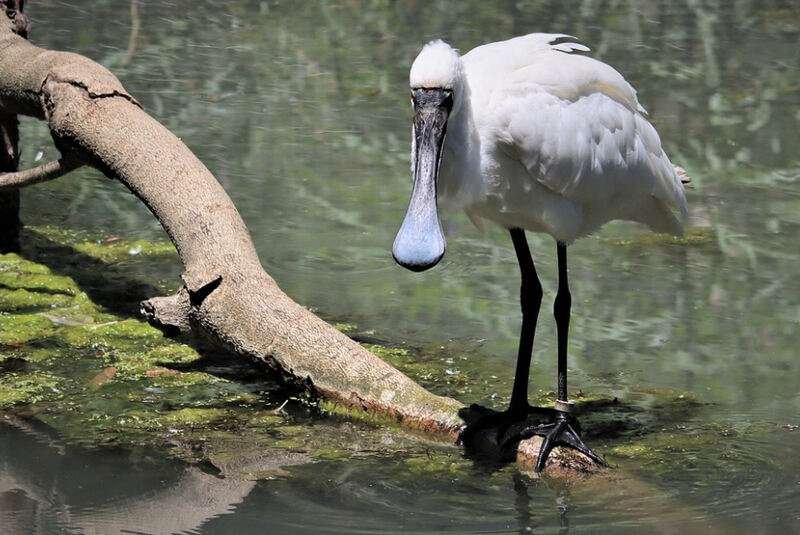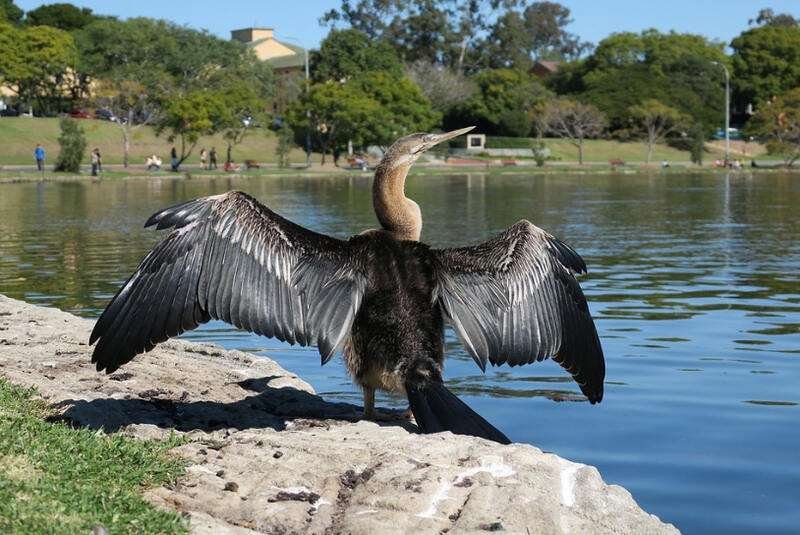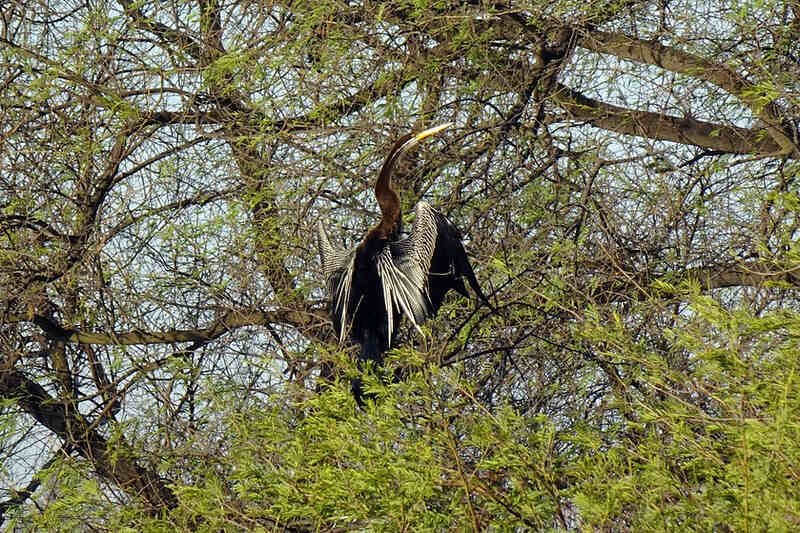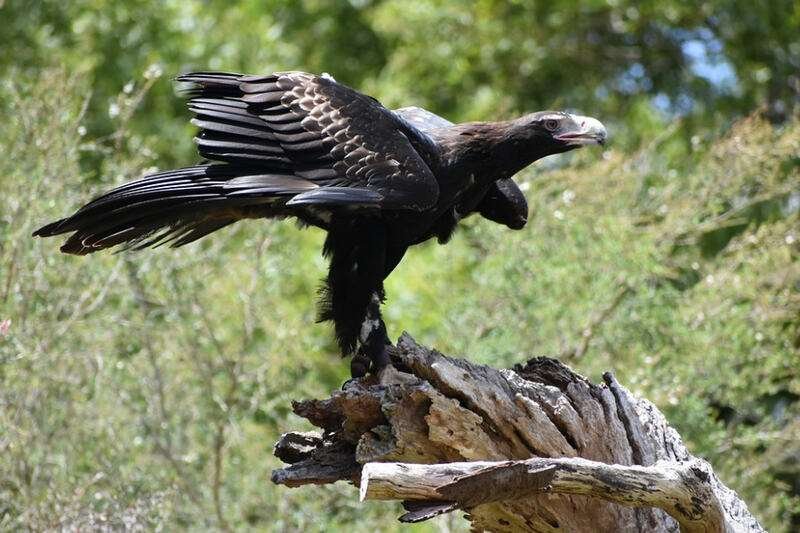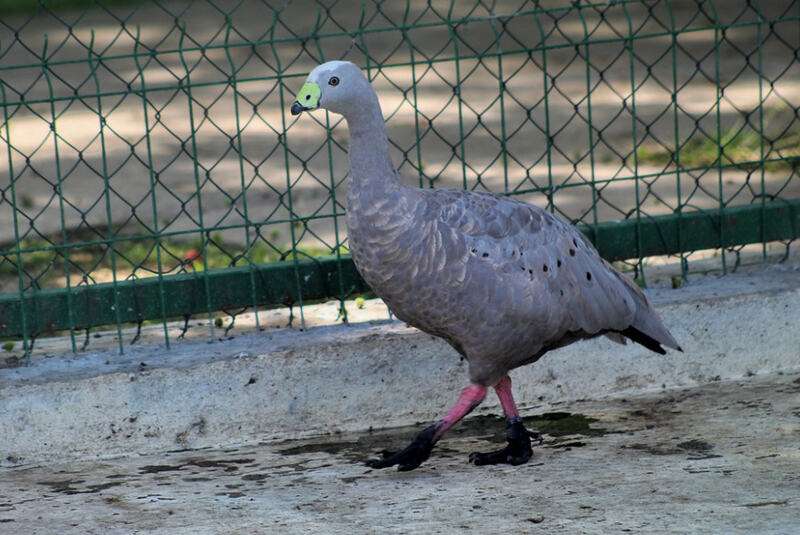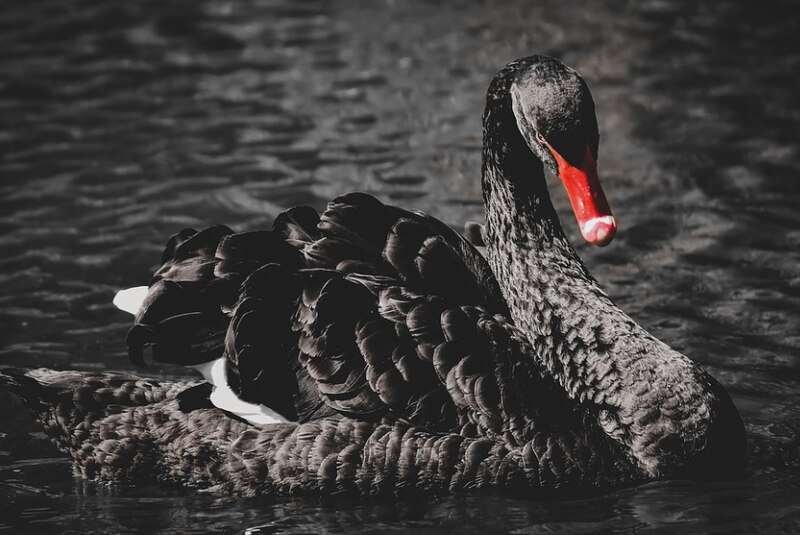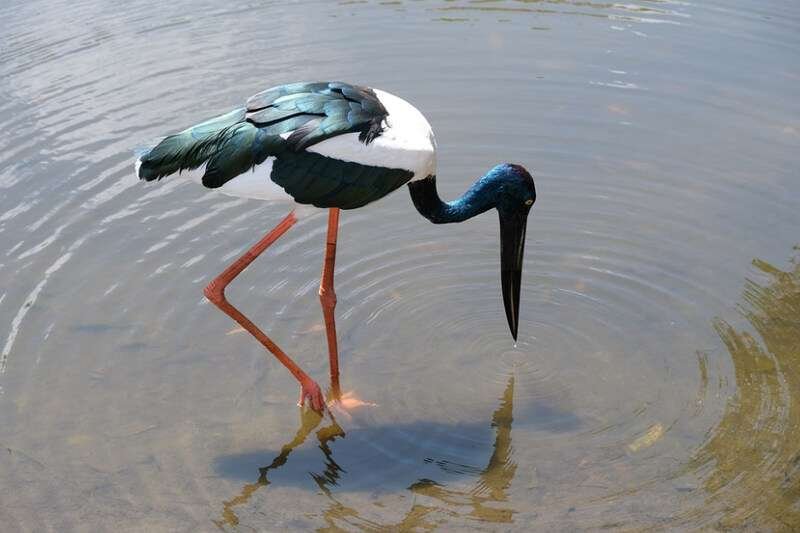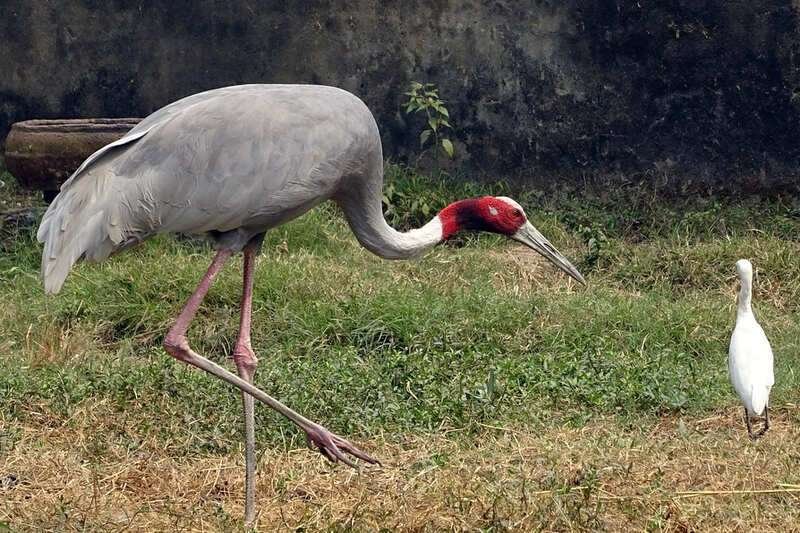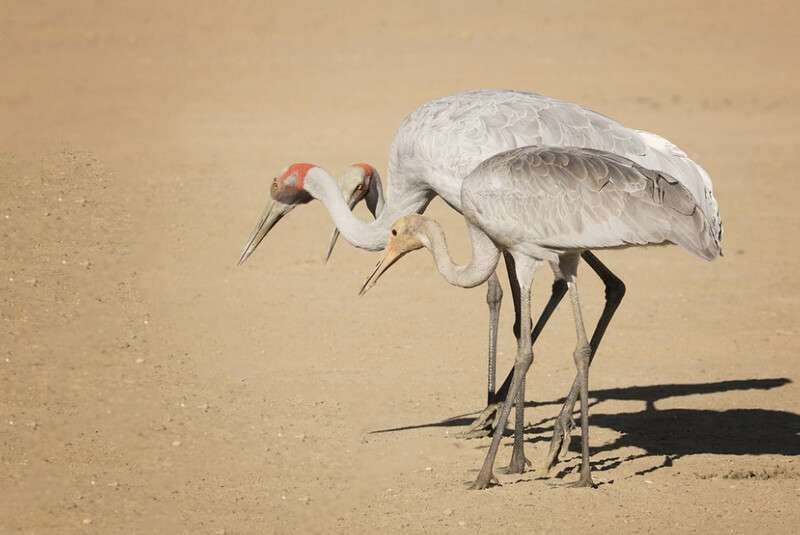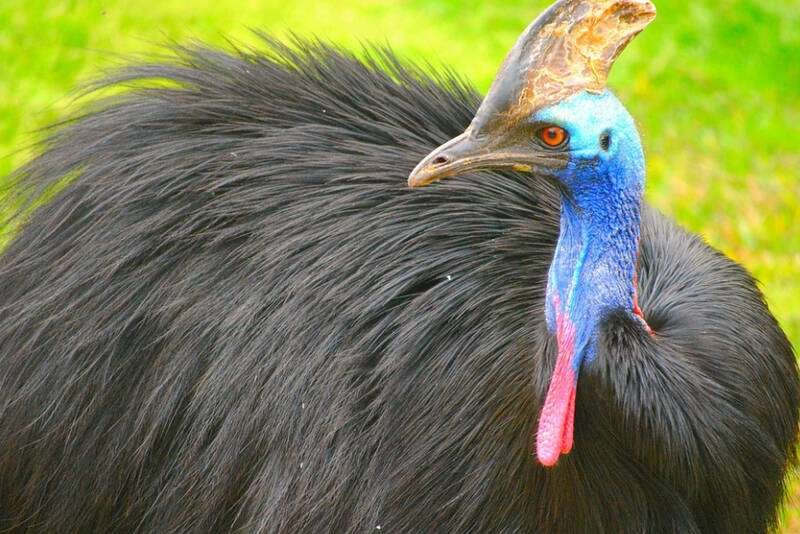Today, we will introduce you Top 15 Largest Birds in Australia. Australia is known to host more than 800 diverse species of birds. Australia is no less than a paradise for birdwatchers.
Every year, thousands of twitchers flock to Australia to relieve their boredom with bird watching and to escape their mundane lives. Australia is surely blessed with an enormous wealth of birds, and around 400 species of birds are endemic to Australia.
From gigantic Emus to appealing Birds of Paradise, Australia offers a huge variety in the shape, size, and vividness of its birds.
Top 15 Largest Birds in Australia
15) Royal Spoonbills
The royal spoonbill, or black-billed spoonbill, is a large, royal white spoonbill with a distinctive spoon-shaped bill, which they sweep from side to side in shallow waters or muddy grounds to catch small fish or crustaceans.
They are a kind of wading bird and have long legs that help them walk through the water.
They are located in saltwater wetlands and shallow freshwater areas; occasionally, they also dwell in artificial wetlands such as dams, sewage lagoons, and reservoirs. These birds communicate through growls, grunts, and soft honks.
- Scientific Name: Platalea regia
- Size: 60-78 cm
- Location: eastern and northern mainland Australia
14) Australian Darters
The Australian darter is another darter commonly found on the Australian continent. They are large birds weighing about 2.6 kg. They are thin, slender birds with snake-like necks, which helps them swim across water and hunt for fish underwater.
These birds typically inhabit freshwater or brackish water in the lowlands or wetlands, where they feed on insects, shrimp, and fish.
They eat fish by tossing it in the air and eating from the side of its head. They have clearly defined upper parts and underparts in black and white plumage.
- Scientific Name: Anhinga novaehollandiae
- Size: 86–94 cm
- Location: throughout Australia
13) Oriental Darters
Oriental darters are extremely long birds with a long, straight, and pointed bill and a slender, much larger snake-like neck that protrudes from their bodies.
These birds are great swimmers and hunt for fish with their lower bodies remaining submerged in the water, just like sea snakes. Hence, these are also commonly known as “snakebirds.”
They are quite similar to cormorants; they hunt fish like them, have wettable feathers like them, and are usually found perched on a rock or a tilted branch with their wings open out for drying.
They have a unique way of eating; they dart and impale the fish from their bill and pull them out, and before swallowing, they toss the fish in the air. Some tribal groups are known to use these birds to catch fish.
- Scientific Name: Anhinga melanogaster
- Size: 85-97 cm
- Location: throughout Australian coastal areas and wetlands
12) Wedge-tailed Eagle
The wedge-tailed eagle is the largest bird of prey endemic to the Australian continent. They are powerful, sturdy birds with a strong beak, elongated, broad wings, and a diamond-shaped tail.
They look quite terrifying with their dark-colored plumage and muscular features. These birds are known to be deadly fighters and are used to incite sibling rivalries when the food supply is limited.
Their nests, like their bodies, are enormous, and they build them on the tallest trees in the forest. Their large size allows them to lift and feed on large prey such as rabbits, wallabies, and small kangaroos.
Wedge-tailed Eagle are commonly known as “golden eagles” or “kings of birds” because of their appearance and features. They can also see a wider range of colors than humans, allowing them to detect prey from up to 2 kilometers away.
- Scientific Name: Aquila audax
- Size: up to 3.5 feet
- Location: mainland Australia, including New Guinea and Tasmania.
11) Cape Barren Goose
The Cape Barren Goose is one of the largest geese and is located on offshore islands and coastal areas in Australia. They have bulky bodies and small heads with pale grey plumage.
These birds have big dark spots on their wings and shoulders and a conspicuous greenish-yellow cere on their bill.
They have the ability to drink salty or brackish water and have extensively webbed feet; these features aid them in residing on offshore islands.
Cape Barred Geese usually feed on grasses, succulents, and herbs and are herbivorous birds.
- Scientific Name: Cereopsis novaehollandiae
- Size: 75-100 cm
- Location: the southern coast of Western Australia, the south-eastern coast of Australia, and south-eastern Victoria.
10) Australian Bustards
Australian bustards, more commonly known as the plains turkey or bush turkey, are found striding in woodlands, grasslands, and open agricultural grounds in Australia. They are one of the largest birds in Australia, with gray-brown plumage and dark markings.
These birds walk sedately, holding their necks and head high, but when they fly, they fly hard with spread and curved-up flight wings.
Sexual dimorphism is present, with males having a black crown with a black breast band and females having a brown crown with no breast band. They love to eat mice and grasshoppers, though other insects and birds are also included in their diet.
- Scientific Name: Ardeotis australis
- Size: 1 meter (3.3 feet)
- Location: North of Mainland Australia, southern New Guinea
9) White-necked Heron
Because of their water-dwelling nature, the white-necked heron, also known as the pacific heron, inhabits most of the Australian continent where freshwater exists.
They are large birds with grey or black plumage and an elongated white neck, which helps them catch fish, frogs, spiders, or any other available food source. These birds have distinctive black spots on their neck and throat.
They are known to be aggressive while defending their territory and have also been observed harassing ibis and raptors to steal the prey they have caught.
Because of the recent modifications to the Australian continent, they have also genetically adapted to thrive in harsh Australian environments, and now they are also commonly seen in flooded pastures and farm dams in search of prey.
- Scientific Name: Ardea pacifica
- Size: 76-106 cm
- Location: on the mainland and on the majority of coastal islands.
8) Wandering Albatross
One of the largest sea birds found on the Australian continent is the Wandering Albatross. They are known as snowy albatross, gooney birds, or white-winged albatross.
They are very big sea birds and have the largest wingspan known of any living bird, which typically ranges from 8.3 to 11.6 feet. Their extremely large wings help them remain in the air for a long time without flapping.
Wandering Albatross have shiny, white plumage with black and white flight wings. They also have a pair of salt glands, which they use to desalinate themselves from all the ocean salts that get imbibed into their plumage.
- Scientific Name: Diomedea exulan
- Size: 107-135 cm (3.6-4.5 feet)
- Location: Australian waters in Queensland.
7) Black Swan
Black swans are native waterbirds of Australia, but they also migrate during adverse climatic conditions. They are large water birds, slightly larger than white swans.
Black Swans have sooty black plumage and a distinctive red bill. These birds have ruffled black wings with white flight feathers. They weigh as much as 9 kg and feed on aquatic vegetation.
Black swans are known for their “swan songs,” which are believed to be sung prior to their deaths when their lives are about to end. They also follow a “triumph ceremony” to compete with their rivals and potential suitors.
- Scientific Name: Cygnus atratus
- Size: 0.2–1.3 m long (0.2–1.5 ft).
- Location: Southeast and Southwest of Australia
6) Black-necked Stork
The black-necked stork is a wading bird that belongs to the stork family. Black-necked storks have a large black neck, a black head, and a long black bill, as the name suggests.
They have white and black plumage and long orange legs that allow them to move quickly and catch fish in the water.
Black-necked storks have a huge appetite and feed largely on aquatic vertebrates, such as fish, frogs, reptiles, and amphibians. They also occasionally feast upon mollusks.
These bird habitats include natural wetlands, lakes, marshes, flooded swamps, rivers, grasslands, and water meadows. They are known as jabiru across Australia and have a powerful dance-like display!
- Scientific Name: Ephippiorhynchus asiaticus
- Size: 129-150 cm (51-59 in)
- Location: northern and eastern Australia’s coastal and sub-coastal areas
5) Sarus Crane
The Sarus Crane is the tallest flying bird and is native to Southeast Asian countries, such as India and Pakistan, although some specimens are also located in Australia. According to ABC News, “the Sarus Crane is a newcomer to Australia, arriving around 30,000 years ago from Asia.” These birds have a wingspan of about 240 cm, which makes them magnificent flyers.
Sarus cranes have grey plumage with a conspicuous red face and upper neck; they also have red-colored iris. They have a long, pointed bill that helps them sail in shallow waters.
These birds are strictly monogamous and are known to weep or starve to death if their partner dies. When danger approaches, they strangely protect their young by making low calls to tell their chicks to lie still or freeze.
- Scientific Name: Grus antigone
- Size: 3.75–5.9 feet
- Location: Northern Queensland
4) Brolgas
Brolgas are a type of crane bird that is endemic to Australia, hence the name “Australian crane.” They are quite large birds and can grow up to 1.8 meters.
Brolga can be distinguished by the presence of a black dewlap and an orangish-red band on its head. They have grey plumage and are mostly white. They have thin, long legs and elongated beaks on their small faces.
These birds are known for their spectacular courtship dance and self-expression. They are excellent foragers and have an omnivorous diet.
These birds dwell in wetlands, wet meadows, coastal mudflats, and shallow open marshes. Brolgas are extremely monogamous, and the couples usually bond for life!
- Scientific Name: Grus rubicunda
- Size: 0.7–1.4 meters (2.4–4.7 ft).
- Location: Australia’s north and northeast.
3) Cassowary
Cassowaries are ratites belonging to the genus Casuarius. Southern Cassowaries are native to Australia and are the third-tallest and second-heaviest birds in the world.
They have huge, distinctive skulls and are thought to be the closest living relatives to dinosaurs. They live in the rainforests of Tropical North Queensland.
Cassowaries are fruit-eating birds that poop fruit seeds to help garden new areas of the rainforest. They are really dangerous and can even kill humans!
- Scientific Name: Casuarius casuarius
- Size: 1.5–1.8 meters (4.11–5.11 feet).
- Location: Queensland rainforests, mangrove forests, and melaleuca swamps
2) Australian Pelicans
Australian pelicans are one of the largest birds in Australia and have the longest bill of all birds, which is equal to a human hand in length with a size of 18 inches.
They expand their beaks and make a pouch that is used for catching fish and other sea foods. Their beaks are modified to hold three to four gallons of water. Australian pelicans are mostly white birds with black flight wings and wing tips and a baby pink bill.
They have an extremely wide wingspan of about 8 feet when fully outstretched, which helps them to travel and cover large distances in the air without resting.
- Scientific Name: Pelecanus conspicillatus
- Size: 2.3-2.6 m (7.5-8.5 ft)
- Location: New Guinea and the Western Pacific Islands
1) Emu
Emus are one of the largest birds on Earth, the biggest bird in Australia, and, in fact, they are the second-tallest bird after ostriches, which are native to Australia. These are soft-plumaged, fluffy birds with long necks and legs.
Emus belong to the category of flightless birds and reach up to 2 meters in length. They really are fast runners, and their extensive legs help them sprint at 48 km/h. They have a strong lifespan and can live up to 20 years in the wild.
Emus are special as they grind their food by swallowing pebbles, have calf muscles to aid their speed, and have two sets of eyelids, one for protection from dust and another for blinking!
- Scientific Name: Dromaius novaehollandiae
- Size: 150-190 cm (59-75 in)
- Location: all states of Australia except Tasmania
Conclusion:
Australia is a great place to tick off items from birdwatchers’ bird bucket lists or if one simply wants to enjoy the beautiful scenes of birds. All these large birds are unique from one another and display a variety of features. We hope you enjoyed reading about the Top 15 Largest Birds in Australia.
Also Read:

Hey there! I’ve been the kid who used to love watching all the science stuff and that fascination lead me to choose Zoology as my Major in Graduation. I’m a self-taught writer and spend my time writing scintillating content on animals. I love observing animals behavior and their bond with humans. I want to give my point of view regarding animals i research about. I had done several projects on animals during my graduation and learned their behavior thoroughly.

